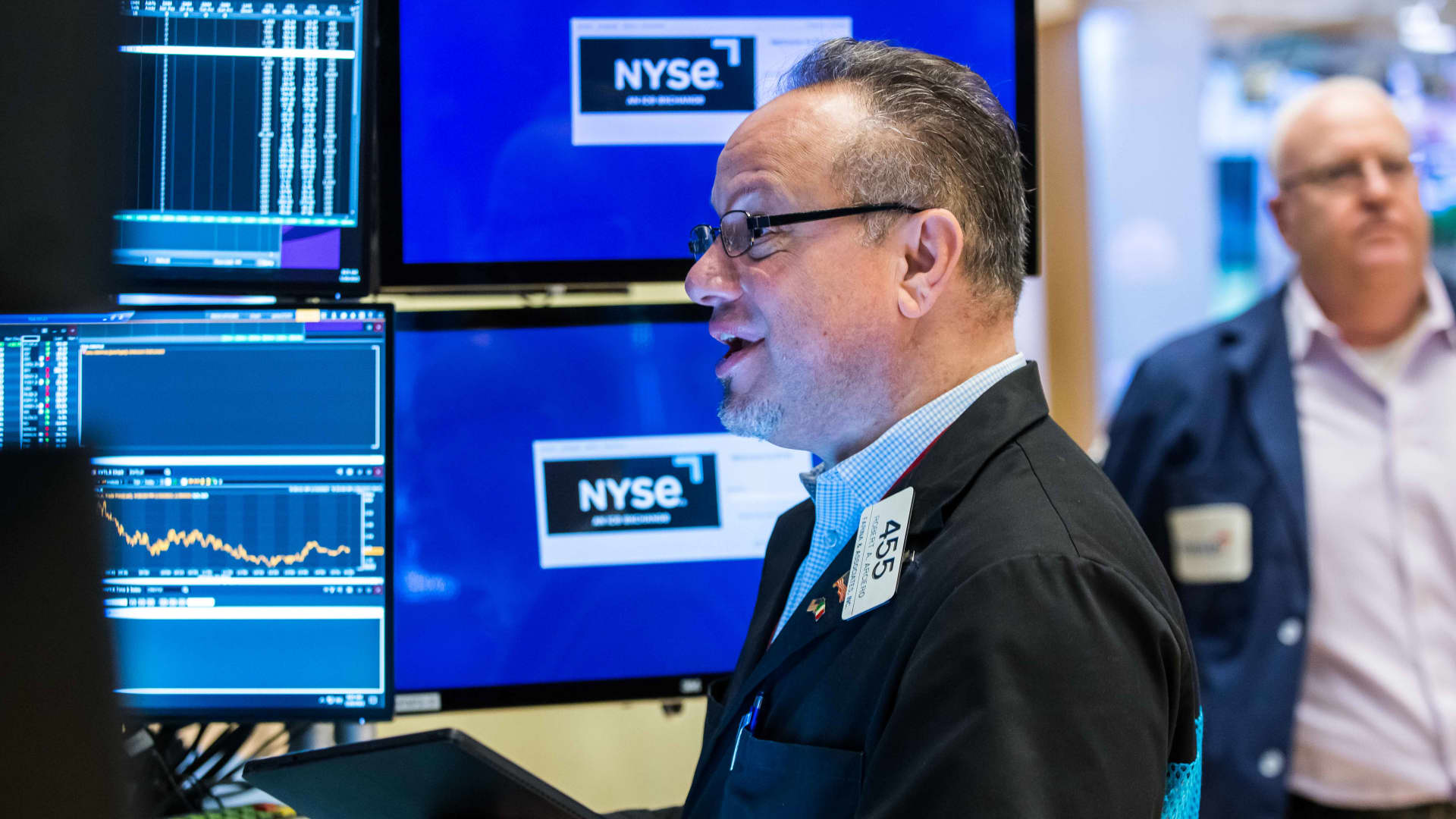
Traders work on the floor of the New York Stock Exchange.
NYSE
January’s stock market gains may be a good sign for the rest of the year, even though many strategists still expect continued turbulence and possibly a new low before the market recovers into the year-end.
The S&P 500 was up 5.1% for January so far in Monday trading.
“Since World War II, if the market is up in January, it has continued to rise in the remaining 11 months of the year more than 85% of the time and average gain is about 11.5 %,” said Sam Stovall, chief market strategist at CFRA. ” So the old saying, ‘as goes January, so goes the year,’ popularized by the Stock Trader’s Almanac, is a true one.”
The average annual S&P 500 gain for any year is about 9%, but Stovall said when the prior year is negative there’s historically a higher bounce and the rally averages 14%.
He said this year has even more reasons to be higher, since other market performance indicators are also positive. For instance, stocks were higher in the Santa rally period in the final five trading days of December and the first two of January. They were also higher in the first five trading days of the month, which is viewed as an indicator for the month’s overall performance.
“If you have a down year plus a positive Santa rally, plus a positive first five days, then in that case the market has been up an average 21% and the frequency of gains is 92%,” he said. “If you add the third level, with the market positive in January, the market was up a shade more than 29% and was up 100% of the time.”
According to Carson Group’s Ryan Detrick, there’s an even better chance for a strong return when the S&P 500 is up more than 5% in January, following a negative year. He noted in a tweet that the combination has only occurred five times, but the S&P 500 was higher on the year all five times with an average gain of 30%. The last occurrence was 2019 when the January gain was 7.9% and the return for the year was 28.9%.
But what could go wrong?
Stock market history shows that there are plenty of reasons for this year to be a good one, but those years of data contrast with big worries about a likely recession, Federal Reserve interest rate hikes and deteriorating earnings.
Jonathan Krinsky, BTIG’s chief market technician, said the market improved technically during January and the S&P 500 notably broke its downtrend. But that doesn’t mean there will not be a major sell-off and a test of the lows.
“All the strategists came out in November, and the consensus was weak first half and things getting better in the second half. And then I heard just as many people saying: ‘If everyone is saying that, then it’s a strong first half and we get the rollover in the second half of the year,'” he said. “I don’t have a good sense of timing.”
So far this year, the mean reversion trade has been a successful one — meaning the losers of last year have become winners.
ARK Innovation ETF (ARKK) 1-year
ARK Innovation ETF was the poster child for growth stock price destruction, but it has snapped back 25% in January though it is still down 48% over the past year.
“We’ve just seen this massive unwind in performance and position and because tech is such a big part of the indexes, and because tech performed so badly last year, that’s why we’ve seen such a strong January because tech outperformed,” he said. He noted that February averages a loss of 0.26% in the S&P 500 over the past 25 years.
Technology is up 8.2% for the month, but communications services, which includes Alphabet, is up 13.2%.
Stovall said typically the sectors that do well in January outperform for the full 12 months. The top sector for the month so far is consumer discretionary, up 13.4%, followed by communications services and technology. The underperformers are utilities, health care and consumer staples.
He said there was a time in history when tech bounced back, in January 2001, but then the market and tech sold off for rest of the year.
“Tech had a massive reversal and the defensives did very poorly in 2001. There was a massive position unwind,” he said.
But he added if there is a reversal of January’s trend, he does not expect it to be of the same magnitude as 2001.
